This article was co-authored by Claudia Carberry, RD, MS. Claudia Carberry is a Registered Dietitian specializing in kidney transplants and counseling patients for weight loss at the University of Arkansas for Medical Sciences. She is a member of the Arkansas Academy of Nutrition and Dietetics. Claudia received her MS in Nutrition from the University of Tennessee Knoxville in 2010.
There are 12 references cited in this article, which can be found at the bottom of the page.
This article has been viewed 54,891 times.
High levels of uric acid are associated with gout and an increased risk of uric acid kidney stones. High levels of uric acid in the blood is known as hyperuricemia and may be detected using a blood test.[1] If you have high levels of uric acid in your blood, then there are several dietary changes you can make. Make sure that you follow your doctor’s instructions first and foremost.
Steps
Making Dietary Changes
-
1Limit purine-rich foods. The best way to reduce uric acid levels is to limit the amounts of purine-rich foods in your diet.[2] Purines are chemicals that form when your body breaks down certain types of food, but a high level of purines can lead to conditions like gout and kidney stones. You should avoid purine-rich foods if you have had gout or uric acid-containing kidney stones or if you have a family history of these conditions. Do not exceed more than two to four servings of any of these foods per week and avoid them completely during a bout with gout or if you have uric-acid-containing kidney stones. Purine-rich foods to limit or avoid include:[3]
- Beer and liquor
- Sugary soft drinks
- Fatty foods such as fried foods, butter, margarine, and high-fat dairy products
- Organ meats such as liver, kidneys, and sweetbreads
- Beef, chicken, pork, bacon, veal, and venison
- Anchovies, sardines, herring, mussels, codfish, scallops, trout, haddock, crab, oyster, lobster, and shrimp
-
2Increase your intake of phytate-rich foods. Phytate is a substance that seems to prevent the formation of many types of kidney stones, including those caused by uric acid. Include two to three servings of phytate-rich foods every day. Phytate-rich foods include:
- Beans
- Legumes
- Whole grains
Advertisement -
3Include dairy products in your diet. Make sure that you include calcium-rich foods in your diet, such as low-fat dairy products. Include one to two servings of calcium rich foods per day. Calcium rich foods include:
- Milk
- Yogurt
- Cheese
-
4Eat vitamin C-rich foods or add a vitamin C supplement. Getting enough vitamin C may also help to lower uric acid levels. Try eating a couple servings of foods that are rich in Vitamin C each day or talk to your doctor about including a vitamin C supplement to help lower your uric acid levels.[4] Foods that are rich in vitamin C include:[5]
- Citrus fruits such as oranges, grapefruit, lemons, and limes
- Kiwi fruit
- Berries
- Cantaloupe
- Pineapple
- Mango
- Papaya
- Broccoli
- Peppers
- Sweet and white potatoes
- Tomatoes
- Leafy greens such as spinach, cabbage, and turnip greens
- Cauliflower
- Winter squash
-
5Stay hydrated. Drinking plenty of water can also help to reduce uric acid in your blood. For most people, the recommended amount is six to eight 8-ounce glasses glasses of water every day. Talk to your doctor for a specific recommendation on how much water you should be drinking every day.[6]
-
6Drink green tea. Green tea has been shown to decrease the risk of uric acid-containing kidney stones. Try to drink about two to three cups of green tea per day to help lower your uric acid levels.
-
7Sip some tart cherry juice. Tart cherry juice has long been used in naturopathic medicine to treat gout and kidney stones. If you have an attack of gout, drink 3-4, 8-ounce glasses of organic, tart cherry juice. This should provide some relief within 12-24 hours.
- Eating cherries can also help. Try including a serving of cherries in your diet each day.[7]
-
8Include a moderate amount of coffee. Drinking coffee in moderation has been shown to decrease uric acid in your blood. Try to include a cup or two of coffee per day to help lower your uric acid levels.[8]
Getting Medical Help
-
1See a doctor if you have gout or kidney stones. If you have had gout or uric acid-containing kidney stones or if you have a family history, make sure that you see your physician regularly.[9] Don't wait to see your doctor until these conditions begin causing serious problems — seeing your physician early can help prevent many issues and can hep you make good choices for your self-care. You can safely make dietary changes on your own, but it is always best to keep your physician informed of your self-care approaches.
-
2Watch for symptoms of gout. Gout is a painful arthritic condition that results when uric acid salts deposit in joints. The most common joint in gout is at the base of the big toe, but it can also affect the joints of the feet, ankles, knees, hands, and wrists. The joints affected become red, inflamed, swollen and painful.[10] It occurs more often in men, but postmenopausal women have a higher risk as well.
-
3Determine if you have kidney stones. Kidney stones can form from uric acid and can cause kidney damage and disease.[11] Uric acid-containing kidney stones can be very painful and are the most common type of kidney stone in children.[12] Kidney stones may cause significant symptoms which include:[13]
- Severe, sharp pain
- Nausea
- Vomiting
- Blood in the urine
- Sweating
- Fever
- Cloudy urine
-
4Learn about risk factors. Even though diet plays a major role in uric acid levels, anyone can have high levels of uric acid in the blood. Adult men and postmenopausal women have the highest risk. Other risk factors include:[14]
- Obesity or being overweight
- Untreated high blood pressure, diabetes, metabolic syndrome, heart disease, and kidney disease
- Some medications including diuretics, low dose aspirin, immunosuppressant drugs
- Family history of gout
- Recent surgery or trauma
References
- ↑ http://emedicine.medscape.com/article/241767-overview
- ↑ https://familydoctor.org/low-purine-diet/
- ↑ http://familydoctor.org/familydoctor/en/prevention-wellness/food-nutrition/weight-loss/low-purine-diet.html
- ↑ http://www.mayoclinic.org/healthy-lifestyle/nutrition-and-healthy-eating/in-depth/gout-diet/art-20048524
- ↑ https://www.nlm.nih.gov/medlineplus/ency/article/002404.htm
- ↑ https://my.clevelandclinic.org/health/symptoms/17808-high-uric-acid-level
- ↑ http://www.mayoclinic.org/healthy-lifestyle/nutrition-and-healthy-eating/in-depth/gout-diet/art-20048524
- ↑ http://www.mayoclinic.org/healthy-lifestyle/nutrition-and-healthy-eating/in-depth/gout-diet/art-20048524
- ↑ https://my.clevelandclinic.org/health/diseases/4755-gout
- ↑ https://www.nhsinform.scot/illnesses-and-conditions/muscle-bone-and-joints/conditions/gout#symptoms-of-gout
- ↑ https://www.kidney.org/atoz/content/gout
- ↑ http://emedicine.medscape.com/article/983759-overview
- ↑ http://www.merckmanuals.com/professional/genitourinary-disorders/urinary-calculi/urinary-calculi
- ↑ https://www.mayoclinic.org/diseases-conditions/gout/symptoms-causes/syc-20372897
About This Article
If you want to lower your uric acid levels through your diet, do not exceed more than 2-4 servings per week of purine-rich foods like fried foods, liver, bacon, or alcohol. Vitamin C may help lower uric acid levels, so eat several servings a day of foods such as citrus fruits, berries, peppers, and tomatoes. You should also increase your intake of phytate-rich foods like beans, legumes, and whole grains, which may help prevent the formation of kidney stones. Keep reading for tips from our reviewer on when to seek medical help, such as seeing swelling of the feet, ankles, or wrists.
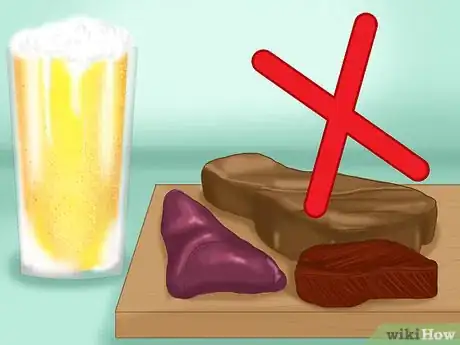
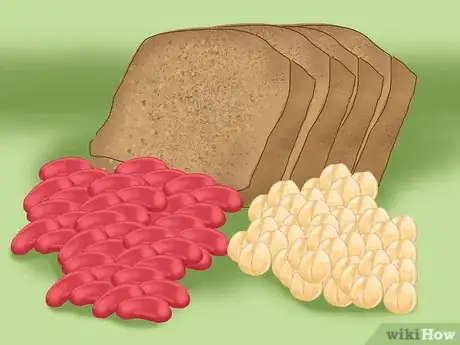


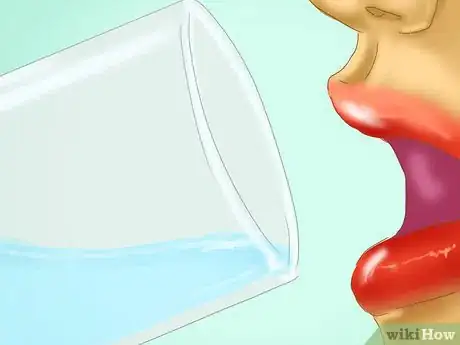
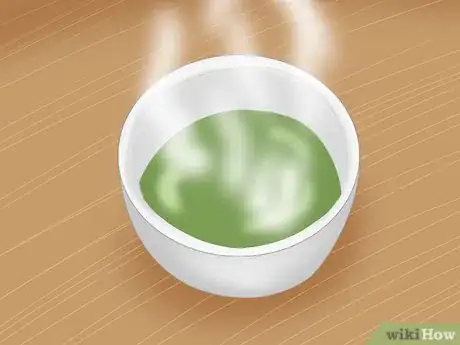



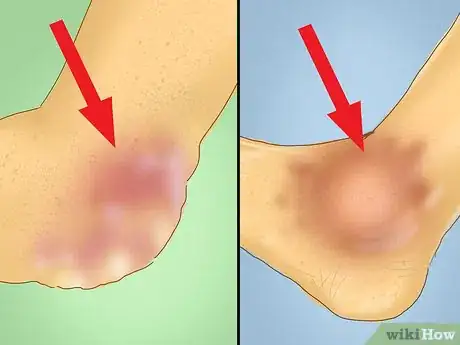

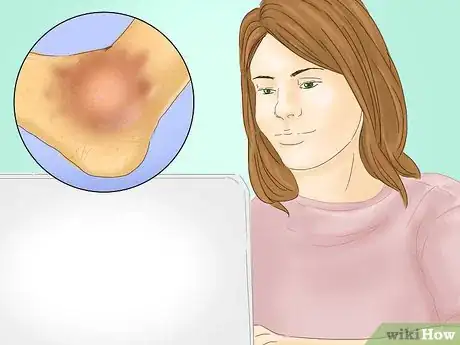









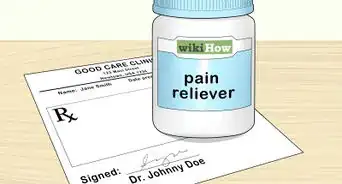



















































Medical Disclaimer
The content of this article is not intended to be a substitute for professional medical advice, examination, diagnosis, or treatment. You should always contact your doctor or other qualified healthcare professional before starting, changing, or stopping any kind of health treatment.
Read More...